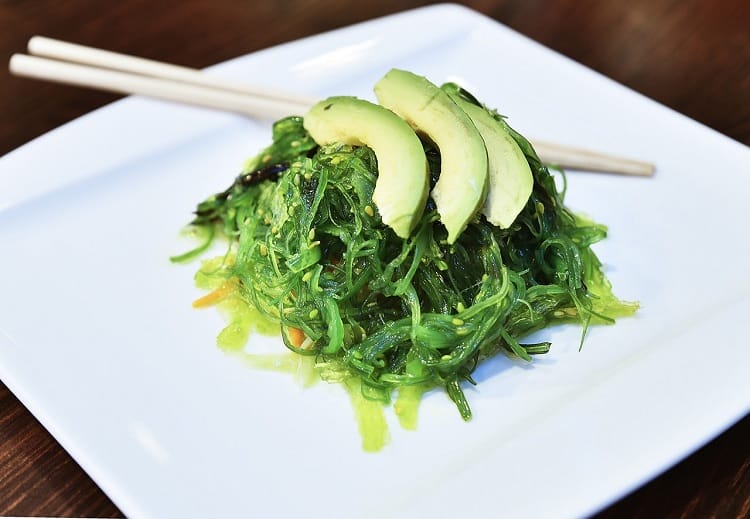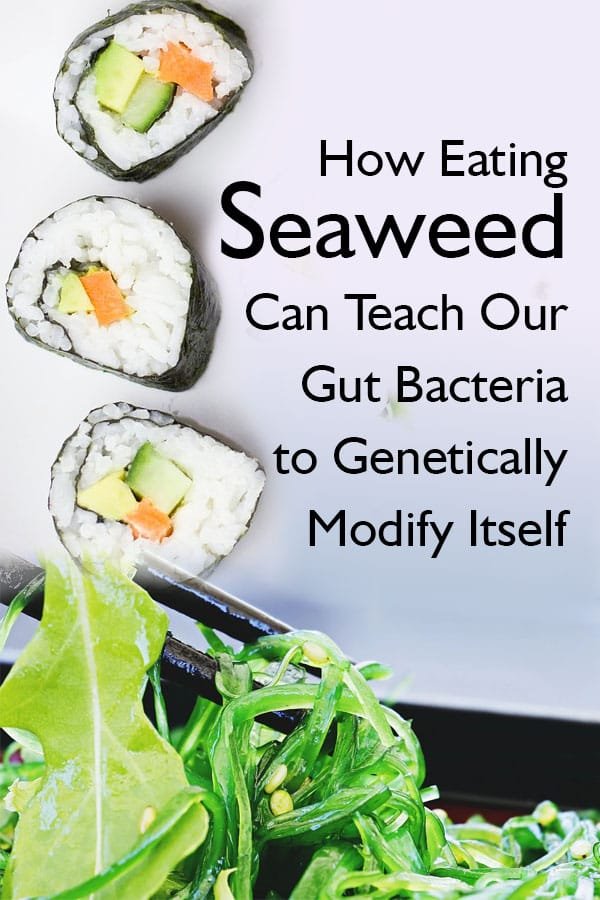Sushi’s spread into Western culture has been followed by a litany of supposed health benefits that it brings, from plentiful antioxidants, fatty omega 3 acids and as assistance to weight loss though manageable portion sizes. If you’re like me and you struggle to string a pair of chopsticks together, you’ll know that eating sushi often discourages over-eating anyway! But a new discovery offers a surprising hint at another offering of a sushi-rich diet: genetically modified gut bacteria.
Our guts are a veritable zoo of wild and wonderful bacteria, in fact over a hundred trillion microbes make our bowels their home, and the fine balance in this environment can impact our health in a multiple ways. These helpful stowaways help us to digest food that we couldn’t otherwise break down – complex molecules such as carbohydrates, for example, are turned into energy in the gut. Some foodstuffs are so tough that they can’t be broken down at all – sweetcorn husks, for example, are a familiar example of a hardy substance that can travel through the gut and escape unphased. And marine algae, including seaweeds, contain unique sulphurous carbohydrates dissimilar to those found in food grown on land – the genes found in an average gut doesn’t possess the tools for breaking down these rarer forms of carbohydrates.

The recently discovered genetically-modified gut bacteria are capable of doing just that. Scientists at the Pierre and Marie Curie University in Paris, whilst studying human gut bacteria, uncovered genes shared with an oceanic microbe called zobellia galactanivorans. Mirjam Czjzek and colleague Gurvan Michel, structural biologists, were searching bacterial genomes for proteins which were capable of breaking down algae when they discovered something a little different. In the genome of zobellia galactanivorans they found an enzyme that akin to those that break down carrageenans and agarose – polysaccharide molecules found in seaweed. These enzymes, however, lacked an essential genetic region which would allow them to recognize these polysaccharides. What they could do, however, was recognize and breakdown porphyran – a porphyra polysaccharide – instead.
So You Are What You Eat
Thus they discovered zobellia galactanivorans, in its natural subsurface habitat, eats and successfully digests a number of seaweed species, including porphyra. Porphyra is commonly known to the culinary community as nori – the seaweed used to wrap sushi. The sequencing of zobellia’s genome produced five enzymes, each unique to science so far, which were able to break down these porphyra polysaccharides. In fact, the genes that encode these enzymes are named after their porphyran purpose – PorA, PorB, PorC. Jan-Hendrik Hehemann, working at the time with Victoria University, found similar genes existing in a number of marine bacteria – and one further gene, residing in the human gut. This exotic microbe is believed to have been transferred into the human gut by lingering on consumed nori which, under traditional sushi techniques, was consumed in a raw state and is therefore much more likely to harbour existing bacteria.

That journey explains how this bacteria ended up in our guts, but it doesn’t explain how its genes ended up in the genes of our gut bacteria. Unlike their human hosts, however, gut bacteria aren’t simply restricted to the genes they inherited, but have another trick in their digestive arsenal. Through a rare process called “horizontal gene transfer” bacteria are able to borrow genes from adjacent bacteria, essentially genetically modifying themselves. Zobellia galactanivorans was kind enough to donate its genes to the bacteria in the human gut, bacteroides plebeius. Once these marine bacteria made it into the human gut, this melting pot of bacteria began to mingle and ultimately traded some valuable genes, ultimately allowing humans that possess these specific bacteria to digest nori, and assume the calorific and health benefits that follow.
Specialized Diet
These genetically modified gut bacteria aren’t found across all demographics however, which makes them a valuable model of how the process of gene transfer can take place. In Japan, the average person consumes 14 grams of seaweed a day – dining out on sushi a couple times a month simply won’t cut it. Jan-Hendrik Hehemann, from the University of Victoria, had discovered six strains of bacteroides plebeius, all in the gut microbiomes of individuals of Japanese ancestry. Further study of 13 Japanese participants yielded seven more enzymes that shared genes with an ocean-dwelling bacteria. When he studied the gut bacteria samples from 18 North American volunteers, Hehemann didn’t find a single gene that could be compared. This provided him with strong evidence that the horizontal gene transfer had taken place, thanks to a specialised diet followed by the Japanese participants.
Calorific Boost
The nutritional value of seaweed has been well documented. Its marine environment permits it to absorb many nutrients that are often lacking in land-based food production, such as iodine which is crucial for a well-functioning thyroid gland. Seaweed is an excellent source of magnesium, a much-overlooked nutrient that has been, over the last hundred years, farmed out of much of our agricultural land – yet remains present in marine plant life. The omega-3 found in seaweed can lift your mood and help prevent depression. The presence of bacteroides plebeius in the Japanese people’s gut will allow them to gain further health benefits from seaweed, as the porphyra polysaccharides can be broken down to generate a calorific boost.

A Sterile Environment
The gene transfer from zobellia to the human gut bacteria of bacteroides plebeius demonstrated by Hehemann et al is the most clear cut example of horizontal gene transfer to have been uncovered by science. The uniquely specialised diet in Japan, as independent from Anglo-American diets, offers the perfect sample. How long these bacteria have been residing in Japanese bowels is unclear, however. A question remains over whether these genes are inherited ancestrally, or if horizontal gene transfer is a regular occurrence once enough nori, with its accompanying microbes, has been consumed. There’s some evidence for the former, as Hehemann discovered the microbes in the gut of a baby, who hadn’t yet picked up the sushi habit.
If we’re relying on horizontal gene transfer for most cases of bacteroides plebeius turning up, however, we may have cause to worry. The increasingly sterilized way we treat our food, especially in the West, dramatically reduces the chances of introducing our gut to new microbes. Our overly hygienic culture may be having a hitherto unseen effect on our gut flora, dramatically reducing its biodiversity.
Gut Future
A glimpse into the hidden ecosystem of our gut has told one surprising story about the epic journey of a marine microbe’s genes, but zobellia galactanivorans’ journey may be becoming a thing of the past. Nowadays nori is usually cooked rather than eaten raw, and our environment is increasingly sterilized. Yet there are undoubtedly many more of these stories waiting to be discovered. Our genes can tell a previously unnarratable story about our relationship with our environments over time. Microbiotic researchers emphasise what we have to learn from unravelling the genetic world of our gut – the key to Western obesity, for example, could be found in genes acquired from a diet long since lost. We are certainly what we eat – it turns out we are even what our ancestors ate.
Author: Vanessa Kearney is a writer and editor at Dissertation Help Service. She is passionate about science and science communication, and is an advocate of the view that if you can’t explain something in simple terms then you don’t understand it yourself!


